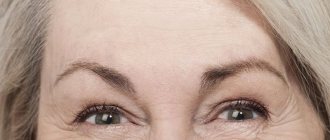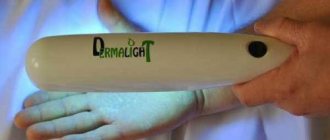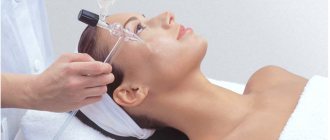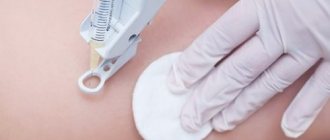Hyaluronic acid is a natural polymer that can be found in many cosmetic products, both for external use (masks, creams, serums, lotions) and injectable forms. HA stabilized with cross-links is the basis of most modern fillers - preparations designed to eliminate wrinkles and folds, increase volume and change the shape of the lips, correct areas of depression and volumetric modeling of the face and body. Unstabilized hyaluronic acid is included in preparations for mesotherapy (biorevitalization), which, when administered intradermally, help moisturize the skin and stimulate metabolic processes, and also ensure a uniform and prolonged supply and distribution of other active ingredients.
When using preparations of unstabilized hyaluronic acid, allergic reactions, persistent inflammatory process (usually signs of inflammation resolve within several hours or days), and angioedema may be observed as adverse events and complications associated with the drug. These reactions are extremely rare, and a thorough medical history is the best way to prevent them.
Side effects from the use of fillers based on stabilized hyaluronic acid are mainly associated with overcorrection, material migration, the formation of areas with a bluish discoloration of the skin when the drug is applied superficially (Tyndall effect), infection and the formation of granulomas as a manifestation of a foreign body reaction. Cases of local necrosis as a result of embolism/compression of blood vessels and a case of pulmonary embolism after injection in the anogenital area have also been described. All of the above side effects are rare, and practicing doctors have been able to verify that hyaluronic fillers (if we are talking about quality drugs) are safe.
One of the most important clinical advantages of fillers based on stabilized hyaluronic acid is the possibility of its accelerated biodegradation under the action of a specific enzyme – hyaluronidase. Complete elimination of the injected material promotes rapid resolution of adverse reactions. Hyaluronidase medications are used in cases of overcorrection, fibrosis and granulomas formed in response to filler injection, as well as for decompression of blood vessels and prevention of necrosis.
What problems require treatment with hyaluronidase?
Most often, patients come to the clinic after unsuccessful lip augmentation in two cases:
- When the drug shines through the mucous membrane because it was not injected deeply enough.
- When unsightly lumps appear on the lips because the drug was administered incorrectly or granulomas have formed.
Also, when introducing hyaluronic acid into different parts of the body, the following complications are possible:
- threatening necrosis of the skin and subcutaneous tissue around the lower lip;
- Tyndall effect or swelling under the eyes caused by too superficial placement of the drug;
- abscesses after increasing the volume of the cheeks;
- early and late allergic reactions.
Lumpiness of lips
Lip necrosis
Swelling of lips
Problems arise due to the administration of a low-quality drug or as a result of the administration of biological products under questionable sanitary conditions.
Many of these patients do not receive care from the esthetician who performed the cross-linked hyaluronic acid procedure because he is not qualified enough to resolve the medical problem in the event of an adverse event. A beauty salon is not a clinic! And a cosmetologist is not a doctor!
Types of enzyme and their actions
Hyaluronidase helps break down hyaluronic acid and maintains its balance in the body. Due to this property, cosmetologists often use it to reduce the volume of lips that have undergone unsuccessful plastic surgery. In these cases, resorption can take up to two days. It is often used in reproductive medicine, as it improves the ability of male reproductive gametes to enter the egg.
In nature, geologists find an enzyme of this substance in poisonous animals, which improves penetration into tissues and enhances the toxic effect.
Component types:
- Testicular type. This type of enzyme is found in the saliva of animals, fish, poisonous bees and snakes.
- A variety found in the saliva of leeches. This enzyme improves the penetration of hirudin and other beneficial substances.
- Microbial types. This enzyme is produced by staphylococci, streptococci and other bacteria.
Most popular: Skin care depending on the time of day and biorhythms
In medicine, these types of components are used for the manufacture of medications and their distribution in the patient’s tissues.
What complications after the injection of hyaluronic acid will hyaluronidase help with?
If you contact an experienced cosmetologist-dermatologist in a timely manner, he will be able to help in any situation, except blindness and skin necrosis. Of course, the introduction of hyaluronidase will not give anything if it was not hyaluronic acid that was used, but some other drug of unknown origin. Hyaluronidase acts on any cross-linked hyaluronic acid that is approved for injection in the European Union.
Hyaluronidase
Effectiveness of the procedure
According to reviews, hyaluronidase in the lips acts very quickly and helps correct existing appearance defects after the injection of fillers. The drug is an enzymatic agent that breaks down connective tissue substances into glucuric acid and glucosamine, reducing their viscosity. The drug increases tissue permeability, facilitating the distribution of fluid in the interstitial space.
However, it is worth remembering that the effect of the enzyme is reversible, which means that when the concentration of the drug decreases, the viscosity of hyaluronic acid gradually begins to recover. The duration of action of hyaluronidase under the eyes, which has quite good reviews, is approximately 48 hours.
You may be interested in:Home laser hair removal machine: review of models, characteristics, reviews
In addition, the drug has an antigenic effect, and when it is repeatedly administered in a significant amount, neutralizing antibodies can be formed.
How quickly does hyaluronidase work?
The effect of hyaluronidase is immediate, but often causes swelling, so most often patients see the effect of complete dissolution of hyaluronidase only after 2-3 days.
- If it is necessary to dissolve only part of the hyaluronic acid, small doses of the enzyme must be administered every 10-14 days.
- If we are dealing with a serious complication and want to dissolve all the acid at once, large doses of the enzyme should be used.
Effect of hyaluronidase
Indications for use
In some cases, hyaluronidase is used after fillers, which is available in powder form and requires prior dilution with saline before use. The product is delivered to the treated area by phonophoresis or by injection. After just 2 days you can notice the first results. Before administering injections, an allergy test must be carried out, since this is an exogenous protein that can cause a rather violent reaction in the body. The enzyme must be used in such conditions as:
- burn scars;
- bruises, abrasions, hematomas;
- reduction in lip volume after plastic surgery;
- trophic damage that does not resolve for a long time;
- heart attack;
- tuberculosis;
- hydrocephalus;
- rheumatoid arthritis;
- damage to nerve endings.
Hyaluronidase has very good cosmetic properties and is used to treat quite serious diseases. The effectiveness of the drugs is explained by the fact that when they are administered subcutaneously, all metabolic processes are normalized, and the cells are maximally hydrated. As a result, the scars begin to resolve and heal, and the hematomas also disappear.
With sufficient hydration, scarred areas become soft and respond well to treatment. Removal of fillers with hyaluronidase has received good reviews from patients, as it helps eliminate negative trophic processes, ensures normal fluid exchange, and also promotes tissue permeability.
Preparations that contain this enzyme do not cause any danger and have absolutely no effect on the internal organs and systems of a person, and their effect is limited to the skin and connective tissue.
Incorrect administration of hyaluronic acid - when and who to contact?
Below is a list of the most alarming symptoms that - if they occur after the injection of cross-linked hyaluronic acid - should prompt the patient to immediately seek help from a specialist experienced in treating complications in the field of aesthetic medicine:
- pain that is not relieved by over-the-counter pain medications;
- increased swelling of the face;
- dyspnea (shortness of breath);
- whitening, decrease or increase in skin temperature over the injection site of hyaluronic acid;
- suspicion of an abscess;
- heat.
Unsatisfactory aesthetic effect, asymmetry, visible lumps and translucency of the drug do not require urgent intervention.
The only correct address where you can eliminate the consequences of complications after using hyaluronic acid is the office of a dermatologist with experience in treating complications in the field of aesthetic medicine.
Contraindications
But still, like almost any substance, hyaluronidase is not recommended if the patient has a tendency to allergic reactions, pregnant women and nursing mothers. It should not be treated if a person has cancer, a chronic or acute inflammatory process in the body, or there is hemorrhage in the area of the nasolabial folds.
Doctors often combine medications with this enzyme and other drugs to improve their absorption. But it is worth remembering that hormonal drugs taken by the patient can negatively affect the absorption of the substance.
Side effects
According to reviews of hyaluronidase, side effects may occur. This remedy may cause:
- dizziness;
- nausea and vomiting;
- chills;
- decreased blood pressure;
- tachycardia and ventricular fibrillation.
It is worth noting that negative consequences are quite rare. However, allergies can be quite serious. There is even a risk of anaphylactic shock. Redness and swelling are sometimes observed in the injection area.
Other complications of contouring
Other complications of contouring include:
- infectious processes at injection sites;
- swelling local and extensive;
- ischemia and/or vascular embolism;
- a radical change in the shade of the epidermis;
- bruises and hematomas.
Most often, such consequences occur in patients who, during a preliminary consultation, hid the truth about their health condition from the cosmetologist and went for a procedure with obvious contraindications. For example, it is prohibited to perform contouring when:
- any neurological and mental disorders - including epilepsy, even if the disease is in the stage of long-term drug remission;
- pathologies of the vascular system - fragility of blood vessels, unstable blood pressure, thrombophlebitis and others;
- heart diseases;
- problems with the kidneys - this can lead to severe swelling, which can only be treated with special medications with a diuretic effect;
- chronic infectious or inflammatory processes.
Watch this video about the consequences of contouring:
Ischemia
Ischemia is a violation of blood supply in the capillaries of the dermis. The reason for the development of such a complication of contour plastic surgery is injury to the vessel during the injection. The first sign of ischemia is considered to be pronounced blanching of the epidermis - it can occur directly during the procedure (“under the hands of a doctor”) or appear after 1-2 days.
If there is only pronounced pallor of a certain lesion on the skin (presumably at the injection sites), then no therapeutic measures are required. Vascular ischemia after contouring is a side effect that is short-lived and disappears on its own.
Embolism
It also manifests itself as a sudden whitening of the skin around the puncture, but is always accompanied by sharp pain. Embolism is a blockage of a small vessel associated with injury to its wall and entry of the administered drug into the bloodstream. Blood circulation in the damaged vessel stops, and nearby capillaries “take” part of the blood onto themselves. This causes the formation of a “mesh” of a red or bluish tint.
This complication requires professional medical care, because in the absence of it, tissue necrosis may develop. The result will be a complex plastic surgery with all the ensuing consequences - a long recovery period, the formation of scars and cicatrices at the surgical sites, and so on.
Necrosis
If the request for embolism was made on time, the doctor will inject hyaluronadase into the sites of previous injections. It will quickly dissolve the drug and remove it from the blood vessel, its functionality will be restored.
Bruises
If during an injection the doctor damages a vessel, then bruising is inevitable. This complication is a mild side effect and does not pose a threat to a woman’s health. Bruises can be pinpoint (located directly at the puncture sites) or extensive (more common with existing fragility of blood vessels).
Even extensive bruises disappear 5-7 days after injections of hyaluronic acid; this process can be accelerated by the following means:
- cold compresses - made from a decoction of chamomile flowers, left for 10 minutes, in the first 1-2 days the manipulation is repeated every 3-4 hours;
- Heparin ointment or Rescuer - promotes the resorption of bruises, applied in a thin layer 3-5 times a day, can cause allergies, so consult a doctor.
Bruises after contouring
Swelling after lip contouring
After lip contouring, swelling is recognized as the most common complication. The reason for its appearance is the superficial introduction of filler with hyaluronic acid. The complication does not pose a threat to human health and life, but there is no aesthetic effect after the manipulation. Moreover, swelling can cause the gel to move under the skin, visually characterized as “floating face.”
The solution to the problem is the introduction of enzymes that ensure rapid resorption and excretion of the drug used from the body. In the case of hyaluronic acid, this is hyaluronidase, but if a synthetic substance was used as an anti-aging drug, then only surgery will help get rid of swelling.
Swelling after lip augmentation
Swelling after lip contouring is considered a complication only if it is extensive and persists for 3 days and subsequent days after the procedure.
Swelling after filler in the nasolabial area
If the nasolabial lip was corrected with filler and extensive swelling developed, then the reasons for this may be:
- non-compliance with the rules of the recovery period by the patient himself;
- the body's reaction to injury to the skin;
- choosing the wrong filler injection depth.
In the first two cases, this side effect does not pose a problem - the swelling will disappear literally in 3-5 days. It is necessary to use cold compresses these days and carefully monitor the dynamics of the condition - the development of an inflammatory process is possible, which can already be treated with antibacterial drugs and requires rapid removal of the drug from the soft tissues of the nasolabium.
Swelling and inflammation after filler injection into the nasolabial area
Violation of the filler injection rules will result in extensive and long-lasting swelling. If it does not decrease in size even after 5-7 days of the recovery period, the cosmetologist will recommend the introduction of hyaluronidase to restore the aesthetic appearance.
Skin color changes
Skin may change color after contouring for several different reasons:
- pronounced pallor of the skin - often associated with an allergic reaction to lidocaine (an anesthetic component included in the filler);
- cyanosis of the epidermis - the Tyndall effect is manifested, associated with a violation of the filler injection technique.
Such complications are not dangerous to the patient’s health, but require medical intervention. If you experience an allergic reaction to a painkiller, then it is enough to take antihistamines and the skin will restore its color. At the same time, the result of rejuvenation will be preserved.
The Tyndall effect is a more complex side effect, and if changes in skin color do not correct themselves (within 3-5 days), then an enzyme will need to be administered to dissolve the anti-aging drug.
Infection
The development of an infectious process after contour plastic surgery is possible with:
- improper manipulation when an infectious agent penetrates the puncture site;
- non-compliance with the rules of the rehabilitation period - for example, if the patient touches his face with his hands too often or uses unauthorized cosmetics in his care.
A) Granuloma after filler injection;
C) After treatment Signs of the onset of the infectious process are severe redness of the skin, increased body temperature, pain when touching the injection sites, severe swelling, and general weakness. Such violations of the condition are a reason for an immediate visit to the doctor. He will conduct an accurate diagnosis and prescribe treatment, most often for a quick recovery and to prevent the development of tissue necrosis and sepsis, the injected fillers are removed from the body using hyaluronidase.
Correction
In medicine, including aesthetic medicine, drugs are used based on testicular hyaluronidase, isolated from the testes of cattle, sometimes pigs or sheep. It doesn’t sound particularly attractive, but this extract solves patients’ problems very effectively. In cosmetology, it was originally used as a means to combat cellulite fibrosis. Now its most significant function is the accelerated biodegradation of hyaluronic acid.
- How to remove lip fillers: advice from our experts
Without going into a detailed description of the chemical processes, the operating principle is as follows: the biological activity of the introduced enzyme leads to the destruction of the molecular bonds of HA, its long oligomers are fragmented into shorter pieces, which are then easily removed from the body naturally. As a result, if the cosmetologist does not make a mistake with the dosage and location of the injections, within 48 hours all the consequences of unsuccessful contouring will be eliminated.
How to choose the right drug
The most popular hyaluronidase-based product on the Russian market is Lidaza, which has been successfully used in dermatology, gynecology, surgery for quite a long time, and has recently become a bestseller in cosmetology. Two more of its analogues are slightly less popular - “Longidaza” and “Liraza”. This is a rare case when domestically produced cosmetic products turned out to be more famous than similar brands of foreign origin.
| A drug | Reg. No. | price, rub. |
| Longidaza | LS-000764 | from 1400 |
| Lidaza | P N000820/01 | from 250 |
| Liraza | R No. 000841/01-2001 | from 1300 |
Hyaluronidase is also produced abroad. Examples of drugs:
| Name | Manufacturer | Price, euro |
| Amphadase 150 | Amphastar Pharmaceuticals, Inc. | 1500 |
| Vitrase Ovine | Alliance Medical Products, Inc., USA | 600 |
| Inno-tds Hyaluronidase (1500 IU) | Innoaesthetics, Spain | from 200 |
| Liporase or LDRase | Global Trading Co., Korea | from 95 |
| Hylase "Dessau" | RIEMSER Pharma GmbH, Germany | from 30 |
None of them are officially registered in Russia - however, for private use they can be ordered via the Internet. But, judging by the reviews, there is not much point in this, since domestic products do an excellent job and are several times cheaper.
How does the procedure work?
The introduction of gailuronidase consists of several sequential injections, their number depends on the area of the treated area and the amount of filler that needs to be removed. At the same time, 70% of success lies in the preparatory work:
- examination of the patient, collection of information about the volume and type of previously administered injection gels;
- calculation of the required volume and concentration of the enzyme;
- conducting an allergy test - a small amount of the drug is applied to a scratch on the skin to make sure there are no adverse reactions.
Next, the doctor dilutes the required amount of Lidase, Longidase or another selected agent in a sterile saline solution, sometimes with the addition of an anesthetic, and injects into areas that require correction. The sensation is not pleasant: patients often complain of increased pain, even despite the use of an anesthetic. But it's worth it, because the results will be more than pronounced:
- The decrease in the volume of previously introduced hyaluronic acid will be noticeable within 1-2 days. Often the first effect is visible within 30 minutes after the procedure.
- A follow-up examination of the patient is carried out after 1-2 weeks, when swelling and edema have completely disappeared. If the result is still insufficient, a little more enzyme is added at this stage.
- A new contouring session can be planned no earlier than 2-3 weeks later.










